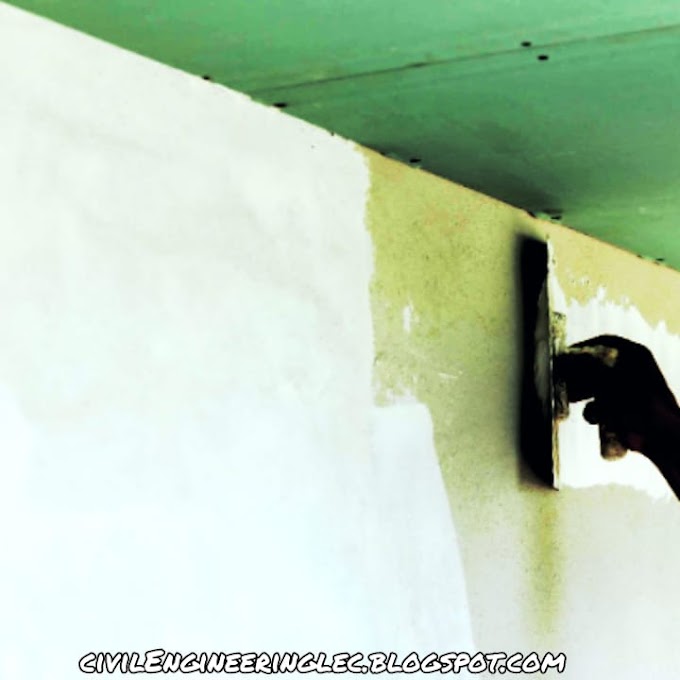Slope
Of Embankment
The inclination of an
embankment of soil along the horizontal surface from the ground is called the
slope of embankment. The slope may be due to soil cutting or due to filling.
These slopes can be natural, such as mountain
slopes; can also be artificially created, such as road embankment. There are
some rules that include the weight of the soil on the slope surface that
constantly adheres to the slopes and tends to move the soil from high to low. If
the forces acting on the soil exceed the shear strength the soil below the
slope will fail. This is called sliding in common parlance.
 |
| Stability of Slopes in cutting and filling |
Slope
Surface Strengthen Factors
The strength of any slope surface depends on the
following factors.
Type
Of Soil
The strength of the slope depends on the soil as the
slope fail which varies for each soil. Therefore, the strength of the slope
depends on the type of soil. Slopes made of high-internal friction soil are
very fragile. In contrast, slopes made of clay are stronger.
Slope
Angle
The shape of the slope (slope angle, height, etc.)
The lower the slope angle, the stronger it will be And the slopes that become
lower will be more stable than the slopes that are higher and angler.
Gravity
Gravity plays a very important role in strengthening
the slope. Gravity is more helpful in sliding the soil.
Moisture
Content
The amount of moisture in the slope soil is very
important. The amount of water increases the weight of the wet soil which
accelerates the process of sliding due to gravity. Excess moisture in the soil
particles further reduces the cohesive force, which in turn reduces the
repulsive force that aids in sliding.
Vibration
And Earthquakes
Vibration and earthquakes, the slopes immediately
degrade the surface. Earthquakes do not have human control, but Vibration can
be controlled.
Types
Of Slope Failures
The slope
surface fails in the following three ways:
Slope
Failure
The failing surface of the slope remains within the
slope toe of the slope and does not pass through the failed surface toe. This
type of failure is usually caused by an excess of the slope angle. This slope
failure is also called face failure. The soil is quite strong near the toe of
such a slope.
 |
| Slope Failure |
Toe
Failure
This type of
failure occurs when the broken surface passes through the toe. This type of slope failure involves the same
type of soil above and below the base. The higher the frictional force in the
soil, the higher the failure of this type of soil. This is because in such a
case, the interconnection of the particles is negligible. Non- cohesive soil is
a clear example of this type of failure.
Base
Failure
This type of failure usually occurs in soft soils. The
high edge of the soil in it makes the broken surface vertical and a little
further from the toe, the soil also rises. In some cases the soil of the foot
is very hard and the broken surface passes loose to the foot. This is mainly
due to the soft and plastic nature of the soil.
Slip
Circle
The soil of the slopes spreads in the form of a
circle. This circle is called slip circle.
 |
| Slip Circle |
Remedial
Measures For The Stability Of Slopes
The sloping
surface can be strengthened in various ways:
Drainage
Of Water:
The biggest
cause of slope failure is water. It damages the slope surface in every way. This
slope can be secured if a deep hole is made at some distance from the toe of
the slope.
Berm
The slope can also be strengthened by providing a
berm or retaining wall. In addition to providing alternative weight by adding
soil with toe also contributes to strengthening the slope surfac
(if you want to lean the full topic relate to bearing capacity then visit to blow link)
Bearing Capacity Of Soil : Soil Mechanics
Removal
Of Soil
If the soil is removed from the top of the slope in
such a way that the slope angle is not reduced, it increases the strength of
the slope surface and also reduces the chances of failure.
Vegetation
Of The Soil
If vegetation grows on the slope surface, it will
resist the process of greenly erosion and thus increase the strength of the
slope surface.
 |
| Vegetation Of The Soil |
(if you want to known that what is the civil engineer salaries in the month in 2021 in worldwide the visit to latest Civil Engineer salaries in 2021)
Compaction
An increase in soil compaction when constructing a
sloping surface leads to an increase in the strength of the sloping surface.
Sheet
Pilling
Applying sheet pilling near the toe of the slope
surface also increases the radius of the slip circle and increases the strength
of the slope surface.
 |
| Sheet Pilling |
Stone
Pitching
Laying stones pitching on the slope surface
strengthens the slope surface. Provided that the soil is well compacted under
the Stone pitching.
Covering
Increase the repellent strength of the soil
artificially by covering the slope with suitable material.
(if you want to lean the full topic relate to bearing capacity then visit to blow link)
Bearing Capacity Of Soil : Soil Mechanics



0 Comments